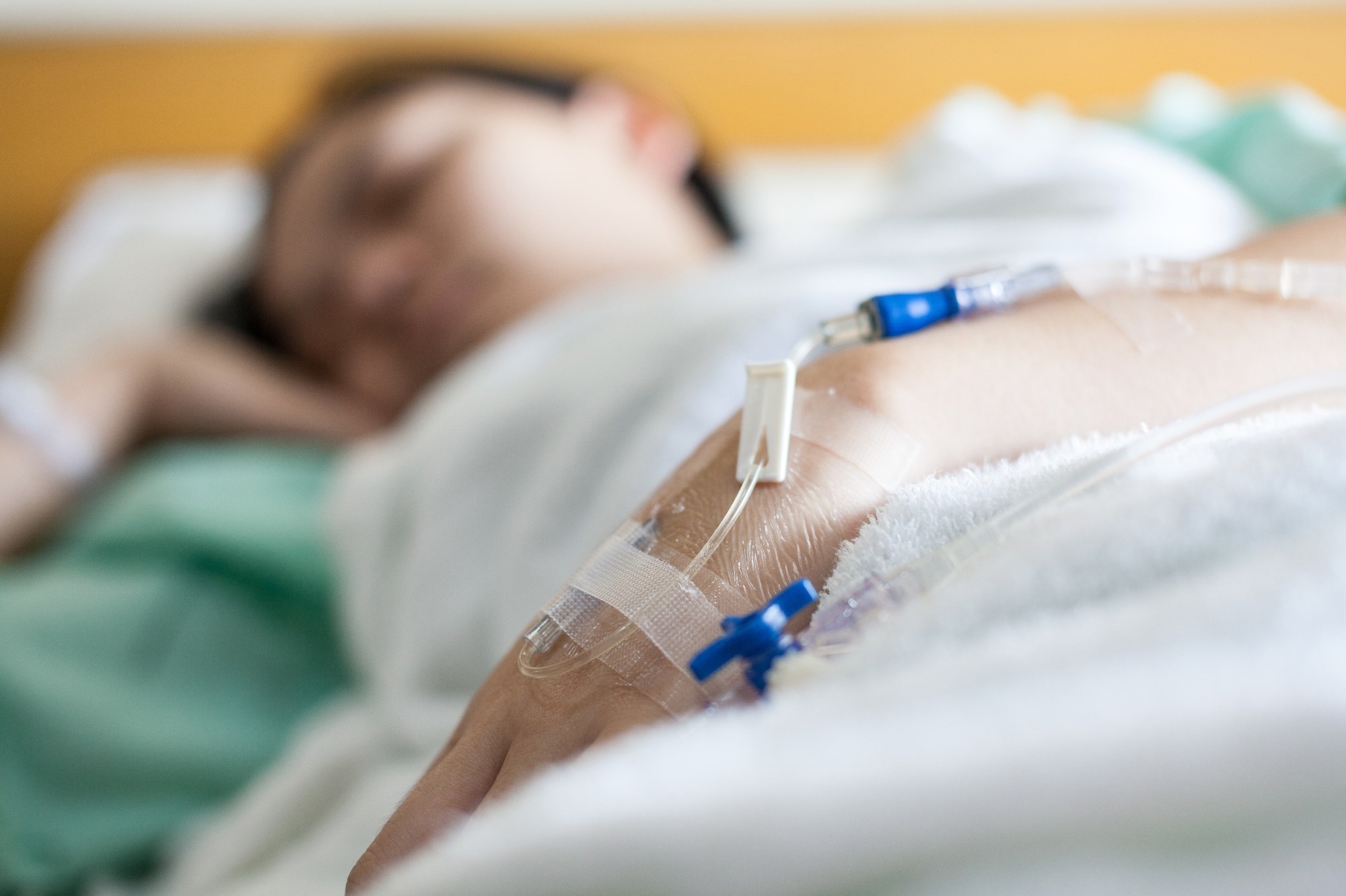In a recent study published in the journal Nature, researchers analyze the extent, pathways, and risk factors of in-hospital severe acute respiratory syndrome coronavirus 2 (SARS-CoV-2) transmission in England. The broader implications of these events for community transmission dynamics and hospital infrastructure optimization were also examined.
 Study: The burden and dynamics of hospital-acquired SARS-CoV-2 in England. Image Credit: JaoKuun / Shutterstock.com
Study: The burden and dynamics of hospital-acquired SARS-CoV-2 in England. Image Credit: JaoKuun / Shutterstock.com
Background
Hospital transmissions were crucial in Middle East respiratory syndrome coronavirus (MERS-CoV) and SARS-CoV outbreaks. Likewise, SARS-CoV-2 also spreads effectively in healthcare environments, thus leading to severe consequences. Despite this, there remains a lack of comprehensive and data-driven assessments of hospital transmission at the national level.
These transmissions not only impact high-risk patients but also endanger healthcare workers, disrupt services, and can significantly spread infection among vulnerable community groups. Particularly during lockdowns, hospital transmissions, unaffected by community interventions, can distinctly influence epidemic trends, a crucial understanding of ongoing epidemics, and potential new variants, even amid high vaccination rates.
Further research is essential to comprehensively document and understand the drivers of SARS-CoV-2 transmission within hospitals using systematic national data. This information can also facilitate assessments of the impact of these transmission events on healthcare service continuity and safety and evaluate their role in broader epidemic dynamics, especially during lockdowns and in the context of high vaccination coverage and emerging variants.
About the study
Researchers utilized a Bayesian approach to calculate hospital-acquired infections, including undetected cases, by considering polymerase chain reaction (PCR) test results, patient stay duration, infection day, and testing regimes. Uncertainties in test sensitivity and other variables were addressed through Monte Carlo simulations and multiple data sources.
The current analysis extended to factors influencing nosocomial transmission through the use of generalized linear mixed models. These included the effects of hospital conditions, regional characteristics, and prevalent viral strains. The researchers emphasized the complexity of hospital-based virus transmission in their analysis and advocated for robust prevention approaches.
Data were acquired from 96 acute hospital trusts, excluding pediatric institutions, and were aggregated weekly from January 2020. Healthcare worker (HCW) infections were inferred from June 2020 to January 2021 using reports on nosocomial cases and HCW isolations. This method was used to estimate infections by considering any absences due to contact tracing and a 10-day isolation period for each case.
The researchers utilized a sophisticated ordinary differential equations model to investigate hospital-community interactions by incorporating diverse groups and scenarios with fluctuating hospital transmission rates. This extensive approach illuminated the nuanced yet pivotal role of hospital transmissions in overall pandemic management.
Study findings
Between June 2020 and February 2021, 16,950 definite and 19,355 probable SARS-CoV-2 infections likely originated within healthcare facilities. These numbers were disturbing, considering they represented a median of 1.7 infections for every 1,000 occupied bed days.
Under the then-current testing policies, only about 26% of hospital-acquired infections were likely being identified, whereas about 12% were considered definite healthcare-associated cases. Even with additional testing measures, the detection rate only rose modestly. This low detection probability was primarily due to the brevity of most hospital stays and the limited sensitivity of PCR tests during the early stages of infection.
Further analyses incorporating these estimates suggested that the actual number of hospital-acquired infections was significantly higher than reported. Under standard testing procedures, the data implied up to 143,000 possible cases, while a more rigorous testing approach reduced the lower limit to 99,000. With approximately 9.2 million hospital admissions during this period, these figures indicated that about 2% of all admissions could result in a patient developing a hospital-acquired SARS-CoV-2 infection.
Hospitals in the North West National Health System (NHS) region were hotspots. Correlation analysis revealed higher rates of hospital-associated infections aligned with certain hospital conditions like bed occupancy rates and the ratio of single-bedded rooms. Interestingly, hospitals with more spacious heated areas for each bed were associated with lower infection rates.
National datasets were analyzed to determine factors affecting virus spread to patients and healthcare workers by considering elements like hospital features, staff vaccination rates, and Alpha variant presence. In various scenarios, hospital transmissions significantly influenced intermittent lockdowns, thereby affecting infection counts and lockdown efficacy.
Journal reference:
- Cooper, B. S., Evans, S., Jafari, Y., et al. (2023). The burden and dynamics of hospital- acquired SARS-CoV-2 in England. Nature. doi:10.1038/s41586-023-06634-z